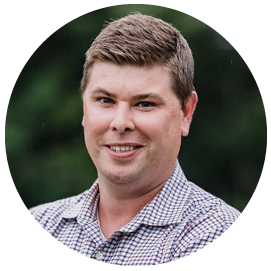How Data Driven Linear Unifies TV Planning, Activation and Measurement
By: [email protected], Senior Vice President of Business Development, Swoop
Data-driven linear (DDL) represents a tremendous opportunity for health marketers to reach condition-specific patients and spend smarter on TV advertising by optimizing media across channels. Here’s what that means for your budget and campaign effectiveness.
Health advertisers have typically relied on linear TV for its scale without truly knowing if they are reaching the right patients. Airtime is purchased based on the most basic demographics that often go no further than age and gender. This traditional way to target doesn’t provide enough depth to keep up with today’s advanced advertising ecosystem. Simply casting the widest net is often inefficient, oversaturating audiences, and ineffective by missing highly relevant patients. Now, with the availability of real world data (RWD) for audience-building, there’s no longer a reason to default to an outdated approach for linear TV.
Targeting precise patient audiences gathered through RWD ensures the right people are seeing a campaign. For health marketers, the end goal of any campaign is elevated script lift. However, the only way to guarantee script lift is by achieving higher audience quality (AQ), or having more condition-specific patients within an audience. Again, demographic, off-the-shelf, or any other traditional targeting approach falls short – segments should be customized to each brand’s requirements using RWD.
Swoop’s unique approach to RWD is driven by an extensive data universe that spans over a decade and includes more than 300 million de-identified US patient journeys spanning ten years. RWD becomes usable through a proprietary system of insight powered by artificial intelligence (AI) that results in a brand-exclusive privacy-safe segment. All data is refreshed weekly to ensure that patients are captured in near real time.
As this data is so robust, it can be mined for specific groups – whether that means those who have recently stopped or started a treatment, patients with a co-morbidity or those who are risk-averse. This level of specificity is crucial because when advertisers want to connect with a defined target market, they can craft campaign messaging that’s more likely to result in action.
Likewise, by applying these audiences to planning tools, advertisers can now have a more granular understanding of their exclusive segment’s viewing behavior and media preferences. This intelligence can be applied across the full TV ecosystem, including linear, addressable and connected TV (CTV)/over-the-top (OTT) – extending to all screens and devices. Unifying all TV channels can’t be achieved without DDL as traditional linear planning and measurement is inherently limited. However, by utilizing a single, precise patient target audience to inform planning, linear activation becomes more strategic – especially when conducted in conjunction with addressable TV and CTV/OTT targeting.
Measuring performance against a single unique audience across the full spectrum of television further allows in-flight reach and frequency optimization towards AQ. Once advertisers know where they’re succeeding or failing, they can update the media mix and ensure ads are seen in the programming that patients are actually watching at the appropriate rate. This cuts excessive waste often attributed with linear activation.
Health marketers can now target precise de-identified patient audiences wherever they view TV and measure the impact of these ads along the patient journey. And targeting via AQ is a better solution for TV than simply trying to reach the most people possible within a specific demographic as it’s a leading indicator of script lift. By applying RWD to linear TV, Swoop is enabling health advertisers to reach viewers at higher margins, move spend to the most effective channels in near real time and unify a single custom audience across the entire television landscape.
Swoop has already helped 42 of the top 50 life science companies and 18 of the top 20 healthcare marketing agencies connect with their ideal patient segment based on RWD, providing hope and achieving better health outcomes all while raising script lift. To find out more, contact us today.
About the Author
Senior Vice President of Business Development

With more than 15 years of experience in both media buying and media sales, Kurt brings a unique perspective to healthcare marketing. He is responsible for overseeing Swoop’s television partner relationships and enhancing client campaign strategies across activation channels, driving optimal brand outcomes. Kurt holds a degree in business and psychology from Ohio University.

